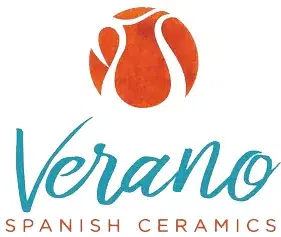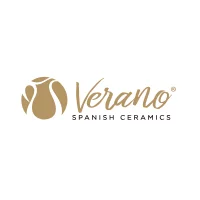Spanish Ceramic Vases: An Essential Guide for Collectors and Enthusiasts

You’re stepping into a world where art and history intertwine – the realm of Spanish ceramic vases.
Imagine strolling through 16th-century Talavera de la Reina, where this craft was born. Picture artisans breathing life into clay, creating exquisite pieces.
In this guide, you’ll uncover the rich heritage behind Spanish Vases, enhancing your collection and appreciation.
Let’s delve into this vibrant journey together.
Introduction to Spanish Vases
As you delve into the world of Spanish ceramic vases, you’ll quickly discover their rich history, unique craftsmanship, and the vibrant cultural significance they hold.
Originating from Spain’s Talavera de la Reina in the 16th century, these pottery vases were a fusion of Moorish and Spanish pottery traditions, symbolising status and luxury. Over time, Spanish vases evolved, incorporating indigenous Mexican influences, creating a unique art form.
Each Spanish vase is meticulously crafted, from clay preparation, shaping, to the firing process that brings out vibrant colors. Intricate hand-painted designs make each ceramic vase a unique masterpiece.
Understanding the origins and craftsmanship of these Spanish ceramic vases enhances your appreciation for them.
Now let’s explore the various types of Spanish ceramic vases.
Types of Spanish Ceramic Vases
As you venture into the world of Vases, you’ll encounter a rich tapestry of traditional Spanish styles, contemporary designs, and unique artisanal pieces.
Each style not only showcases the mastery of Spanish craftsmen but also reflects the cultural history and artistic evolution of Spain.
Let’s unpack these categories to better understand the allure and significance of these ceramic treasures.
Traditional Spanish Styles

While you may be familiar with the rich history of Talavera pottery, you’ll also want to explore other traditional Spanish styles of ceramic vases, such as the equally renowned Andalusian style. These Spanish vases, often used as flower vases or centrepiece vases, exhibit an intricate blend of Moorish and Spanish influences.
Known for their vibrant colours and elaborate patterns, they’re a testament to the skill and creativity of Spanish artisans. As you delve deeper, you’ll find a variety of decorative ceramic vases, each bearing the unique markings of its region of origin.
Whether you’re a collector or an enthusiast, understanding these styles will enhance your appreciation of Spanish ceramic vases, making each acquisition a journey into Spain’s rich ceramic heritage.
Contemporary Spanish Designs
There is an abundance of innovation and creativity found in contemporary Spanish ceramic vase designs.
Artists today are reinterpreting time-honoured techniques, seamlessly blending tradition with modern aesthetics. This fusion results in unique decorative vases that bear the unmistakable stamp of Spanish artistry while reflecting the dynamism of the modern world.
For collectors and enthusiasts, these contemporary Spanish designs represent an exciting new frontier in the realm of Spanish vases. Each vase is a testament to the artist’s skill, capturing the essence of Spanish culture in fresh and inventive ways.
As such, they aren’t just beautiful objects, but also a vibrant part of Spain’s living artistic heritage.
Unique Artisanal Pieces
Now, let’s explore the five main types of unique artisanal Spanish ceramic vases, each representing a captivating blend of tradition, creativity, and the individual artist’s mastery.
– Botijo: A traditional Spanish vase, used historically for cooling water.
– Albarello: This cylindrical vase was commonly used in pharmacies for storage.
– Búcaro: Historically, this vase was used for decorative purposes and often features ornate designs.
– Talavera: Originating from the town of Talavera de la Reina, these vases are known for their distinctive patterns and vibrant colours.
These unique artisanal pieces are often sought after by both collectors and enthusiasts. The beauty of Spanish vases lies in their diversity, each piece bearing the mark of its creator’s skill and imagination.
Collecting and Caring for Spanish Ceramic Vases

When collecting Spanish Ceramic Vases, it’s crucial to consider authenticity and value. You’re not just acquiring beautiful objects, but pieces of history that require mindful care.
Proper display and preservation are also important factors to keep in mind. Let’s explore how to build a collection that lasts and appreciates over time.
Authenticity and Value
As a collector, it’s crucial that you understand how to authenticate genuine Spanish ceramic vases to ensure you’re getting true value for your money. Determining authenticity involves careful scrutiny and often requires professional expertise.
Consider these factors:
– Provenance: Documentation proving an item’s history can significantly increase its value.
– Maker’s Mark: Authentic vases often bear the marks of their creators.
– Quality: Genuine Spanish ceramic vases exhibit high-quality craftsmanship.
– Professional Appraisal: Experts can accurately assess a vase’s authenticity and value.
Display and Preservation
In your journey as a collector, understanding how to effectively display and preserve your Spanish ceramic vases is key to maintaining their aesthetic appeal and longevity.
Display them in an area with minimal direct sunlight to prevent fading. Avoid temperature fluctuations by keeping them away from heat sources and air conditioners.
For preservation, gentle cleaning with a soft cloth is ideal – abrasive cleaners can damage the vase’s intricate designs. Similarly, storing them in dry, cool places aids in their longevity.
Enthusiasts and collectors should invest in display cabinets with glass doors for optimal display and preservation.
This essential guide serves as your resource for appreciating the beauty of Spanish ceramic vases while ensuring their preservation for future generations.
Building a Collection

Now that you’ve got a good grasp on displaying and preserving your Spanish ceramic vases, it’s time to delve into the exciting world of building your own collection.
The thrill of uncovering rare and distinctive pieces is part of the allure for collectors and enthusiasts alike. Here’s an essential guide to get started:
– Start by deciding the focus of your collection: era, region, or artist, for instance.
– Expand your knowledge, network with other enthusiasts, and learn from experts.
– Verify authenticity before making a purchase.
– Care for your pieces properly to maintain their value over time.
Cultural Significance Today
With the passage of time, you’ll find that Talavera pottery continues to hold significant cultural importance, embodying a vibrant fusion of Spanish and indigenous Mexican traditions.
Spanish vases, in particular, are cherished by collectors and enthusiasts alike for their intricate designs and rich history.
Today’s cultural significance lies not only in their aesthetic appeal but also in their symbolism of cultural unity and resilience. Often displayed during festivals and traditions, these vases serve as tangible reminders of a shared heritage.
Despite the advent of modern art forms, the demand for these traditional vases remains high. As a collector or enthusiast, understanding this cultural significance today can deepen your appreciation of the craftsmanship and enrich your collecting journey.
Tips for Buying Authentic Vases
Buying authentic Spanish ceramic vases can be a rewarding experience, but it’s crucial that you know how to distinguish the genuine pieces from counterfeits.
First, always buy from reputable dealers who can provide provenance or a certificate of authenticity. Be wary of prices that seem too good to be true; authentic pieces often reflect the time and skill invested in them.
Examine the piece closely. Genuine Spanish ceramic vases typically bear the marks of artisanal craftsmanship such as hand-painted designs, irregular shapes, and the use of traditional motifs.
Finally, familiarise yourself with the different regions and their unique styles. This knowledge will help you make informed decisions.
Up next, let’s delve into exploring traditional Spanish styles.
Exploring Traditional Spanish Styles
So, how can you delve into the rich tapestry of traditional Spanish ceramic styles? Start by recognizing the distinct characteristics:
– The Talavera style, with its intricate patterns and vibrant colours.
– Botijo ceramics, known for their rustic charm and practical use.
– Manises pottery, renowned for its metallic sheen and intricate detailing.
– The earthy, unglazed pots from Triana, demonstrating a rich, organic aesthetic.
Each style reflects a unique facet of Spain’s cultural history and artistic tradition.
As you explore these styles, you’ll appreciate the craftsmanship, dedication, and centuries-old techniques that breathe life into these ceramic pieces.
Now, with this understanding, let’s transition into a different realm and discuss modern Spanish ceramic designs.
Modern Spanish Ceramic Designs

As you journey from the traditional to the contemporary, you’ll find that modern Spanish ceramic designs offer a fresh take on age-old practices. They blend centuries-old techniques with current artistic trends, creating pieces that are both timeless and innovative.
You’ll notice that today’s ceramics exhibit greater simplicity and minimalistic elegance, diverging from the ornate patterns of the past. Yet, the vibrant colours, a hallmark of Spanish ceramics, remain.
These modern pieces also reflect a shift towards functionality, with designs that merge beauty with practical use. Many artisans now experiment with unconventional shapes, pushing the boundaries of this traditional art form.
Value of Artisanal Pieces
The value of artisanal pieces goes beyond their price tag, offering you a unique connection to a rich cultural heritage and a testament to the skill of the artisan. When assessing the worth of Spanish ceramic vases, consider:
– Craftsmanship: The skill and technique of the artisan plays a crucial role in the value of the piece.
– Provenance: The origin and history of the piece can add significant value.
– Condition: The preservation and overall state of the piece directly impact its worth.
– Rarity: Limited edition or hard-to-find pieces tend to be more valuable.
Spanish Ceramic Vases in Interior Decor
Incorporating Spanish ceramic vases into your interior decor not only enhances the beauty of your space but also infuses it with a rich cultural vibe.
It’s about striking a balance, harmonising the vibrant colours and intricate patterns of the vases with your existing decor.
As an enthusiast or collector, showcasing your collection can also become an integral part of your home’s aesthetic narrative.

Incorporating Spanish Ceramics
You’ll find that a well-placed Spanish ceramic vase can be the statement piece that skyrockets your room’s aesthetic appeal. The vibrant colours, intricate patterns, and unique shapes can effortlessly elevate your decor. Spanish ceramics are versatile and can seamlessly blend into various design themes.
Harmonising with Decor
Building on the idea of incorporating Spanish ceramics into various decor styles, harmonising these vibrant, hand-painted vases with your existing interior decor can truly transform your space into a testament of your refined taste and style.
Consider the colour palette in your room; Spanish ceramic vases often feature a medley of blues, yellows, and reds, which you can match with other decor elements for visual cohesion. Use them as statement pieces, placing them in focal points to create balance and draw the eye.
Remember, it’s essential to maintain harmony without overwhelming a space.
Spanish ceramic vases can introduce a cultural narrative, a touch of luxury, and a vibrant splash of colour into your space, enhancing its uniqueness and charm.
Showcasing Collections
When you’ve accumulated a substantial collection of Spanish ceramic vases, it’s time to think about how you can tastefully display them in your home. Don’t just stow them away in a cabinet, let them shine and make a statement.
Here are some creative ways you can showcase your collection:
– Make them the focal point of a room. Arrange them on a mantle, a console table, or a bookshelf.
– Use them as centrepieces on dining tables, coffee tables, or outdoor patio tables.
– Group them by colour, shape, or size for a visually striking display.
– Place them in unexpected places like the bathroom or kitchen to add an artistic touch.
Best Practices for Display
Displaying your Spanish ceramic vases requires careful consideration to both showcase their beauty and preserve their quality. Choose a location where the vases can be viewed easily, but won’t be susceptible to accidental knocks or falls. Be mindful of lighting; natural light can enhance the vase’s colours, but too much can cause fading. Avoid extreme temperature changes, as these can cause cracks.
Your vases should be dusted regularly with a soft cloth. For deep cleaning, use a mild detergent and warm water, but never soak them. Rotate your display occasionally to give each piece its time in the spotlight. If you’re using a shelf or cabinet, ensure it can support the weight. Finally, keep your vases out of reach from children and pets.
Elevating Decor With Spanish Ceramics
Having established your collection, you’re now poised to elevate your decor using Spanish ceramics, as a testament to your impeccable taste and appreciation for fine artistry. This pottery’s vibrant colours and intricate patterns can transform any space, adding depth and a touch of luxury.
When used thoughtfully, these pieces create visual impact and spark conversation, their unique designs reflecting a rich heritage. Consider the placement of your pottery, juxtaposing modern decor with these traditional pieces for a stunning effect.
Larger pieces can anchor your room, while smaller ones can add pops of colour to unexpected spaces. By integrating Spanish ceramics into your decor, you’re not just displaying beautiful objects, you’re storytelling, adding layers of culture, history, and art to your home.
Fusing Vases With Existing Decor

When you’re ready to fuse your collection of Spanish ceramic vases into your existing decor, it’s crucial to consider both the individual characteristics of each piece and the overall aesthetic of your space.
Identify the dominant colours in your room and choose vases that complement or contrast this palette.
Utilise the size and shape of your vases to balance the visual weight of your space.
Consider the style of your decor – traditional, modern, eclectic – and select vases that align with this theme.
Remember that placement is key. Whether on a mantel, shelf, or table, your vases should enhance, not overshadow, the surrounding decor.
Incorporating Spanish ceramic vases into your home allows you to infuse your space with timeless elegance and cultural richness.
Creative Display of Collections
Now that you’ve found the perfect vases and considered how they’ll fit in with your decor, it’s time to get creative with your display.
Grouping vases by colour, shape, or era can create a visually compelling arrangement. Contrarily, a diverse mix can also captivate, showcasing the range of your collection.
Consider different heights and sizes for an engaging display. Utilize shelves, tables, or even wall mounts to show off your vases. Don’t limit yourself to traditional settings, a vase placed unexpectedly, like in a bookshelf or atop a mantel, can be a delightful surprise.
Rotate pieces regularly, this keeps your display fresh and allows each vase its moment in the spotlight.
Supporting Local Artisan Communities
While you’re exploring the world of Spanish ceramic vases, it’s essential that you understand how your purchases can significantly support local artisan communities. Each vase you buy isn’t just a piece of art, but a lifeline for these communities. These artisans pour their heart, soul, and centuries-old techniques into each piece. They depend on the sale of their work for their livelihood.
By purchasing directly from trusted sources and verified sellers, you’re ensuring your money goes back into these communities, aiding in their survival and growth. Moreover, you’re helping to keep these traditional crafts alive, preserving an important part of Spanish cultural heritage.
Frequently Asked Questions
How Do Spanish Ceramic Vases Compare to Other European Ceramic Art in Terms of Style and Technique?
Spanish ceramic vases uniquely blend Moorish and Mexican influences, unlike other European ceramics. They’re handmade, with vibrant colours and intricate designs, showing a distinct style and technique that’s unmistakably Spanish.
What Precautions Should Be Taken While Transporting Spanish Ceramic Vases?
When transporting Spanish ceramic vases, you should ensure they’re well-padded and securely placed. Avoid extreme temperatures, as they can damage the ceramics. Always handle with clean, dry hands to prevent any oils from staining them.
Are There Any Notable Museums or Exhibitions That Feature Spanish Ceramic Vases?
Yes, you’ll find Spanish ceramic vases in notable museums like the National Ceramic Museum in Valencia, Spain. They often feature in exhibitions worldwide, showcasing the rich history and craftsmanship of these beautiful art pieces.
How Do the Values of Spanish Ceramic Vases Appreciate Over Time?
Just like fine wine, Spanish ceramic vases appreciate over time. They’re not just vases, they’re investments. As they age, their historical significance deepens, rarity increases, and demand soars, driving their market value higher.
Can Spanish Ceramic Vases Be Customized or Commissioned From Artisans?
Absolutely, you can commission customized Spanish ceramic vases. Just contact an artisan directly. They’ll work with you to create a unique piece that reflects your personal style and meets your specific needs.
Conclusion
Don’t let the fear of counterfeit pieces deter you from this rewarding hobby. With a discerning eye, and the knowledge you’ve gathered from this guide, spotting fakes becomes less daunting.
Remember, each authentic Spanish ceramic vase you acquire isn’t just a beautiful art piece, but a tangible slice of history and culture. Embrace the thrill of the hunt and the joy of supporting local artisans.
Start enriching your collection with these stunning Spanish ceramics today.


